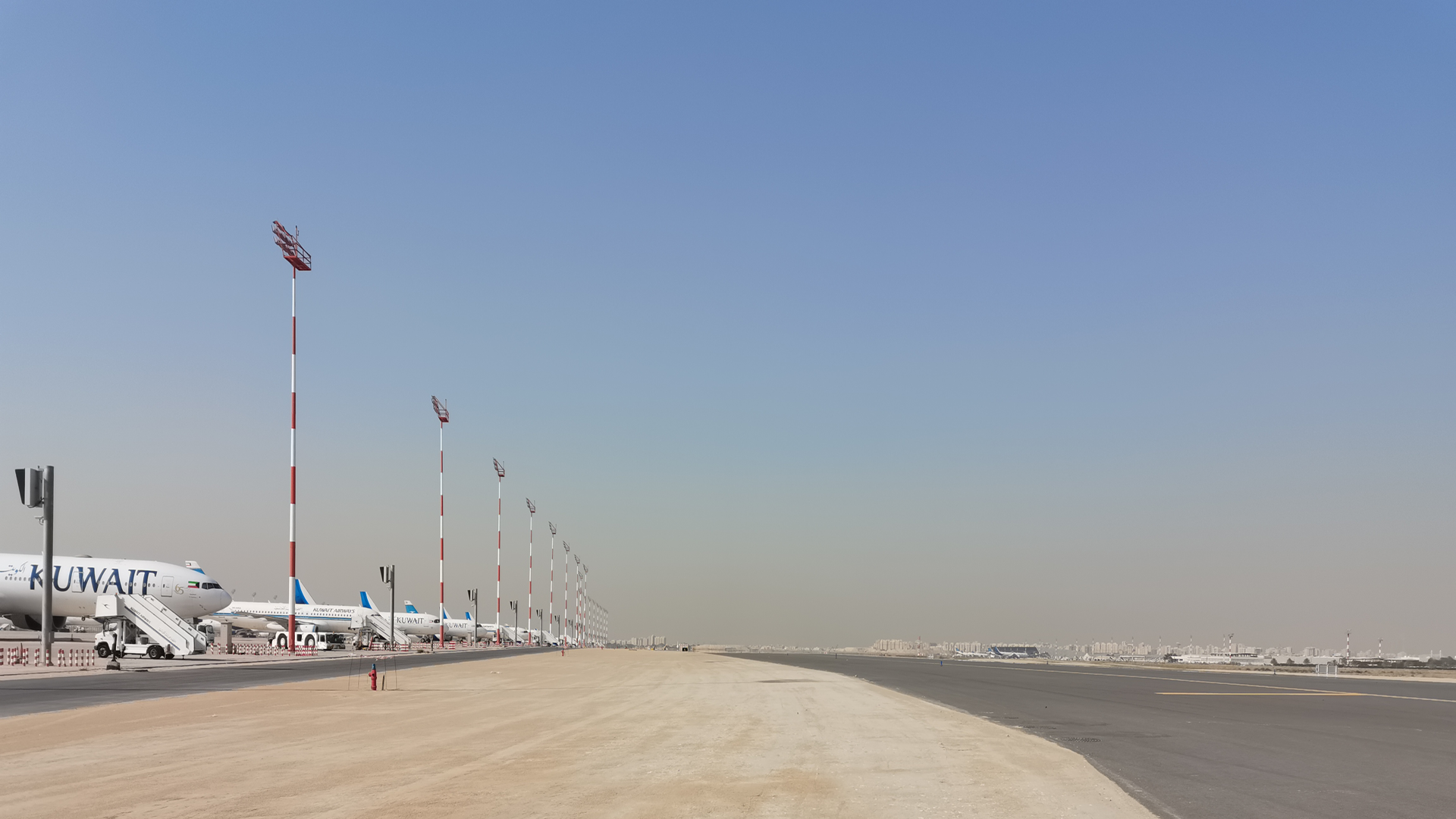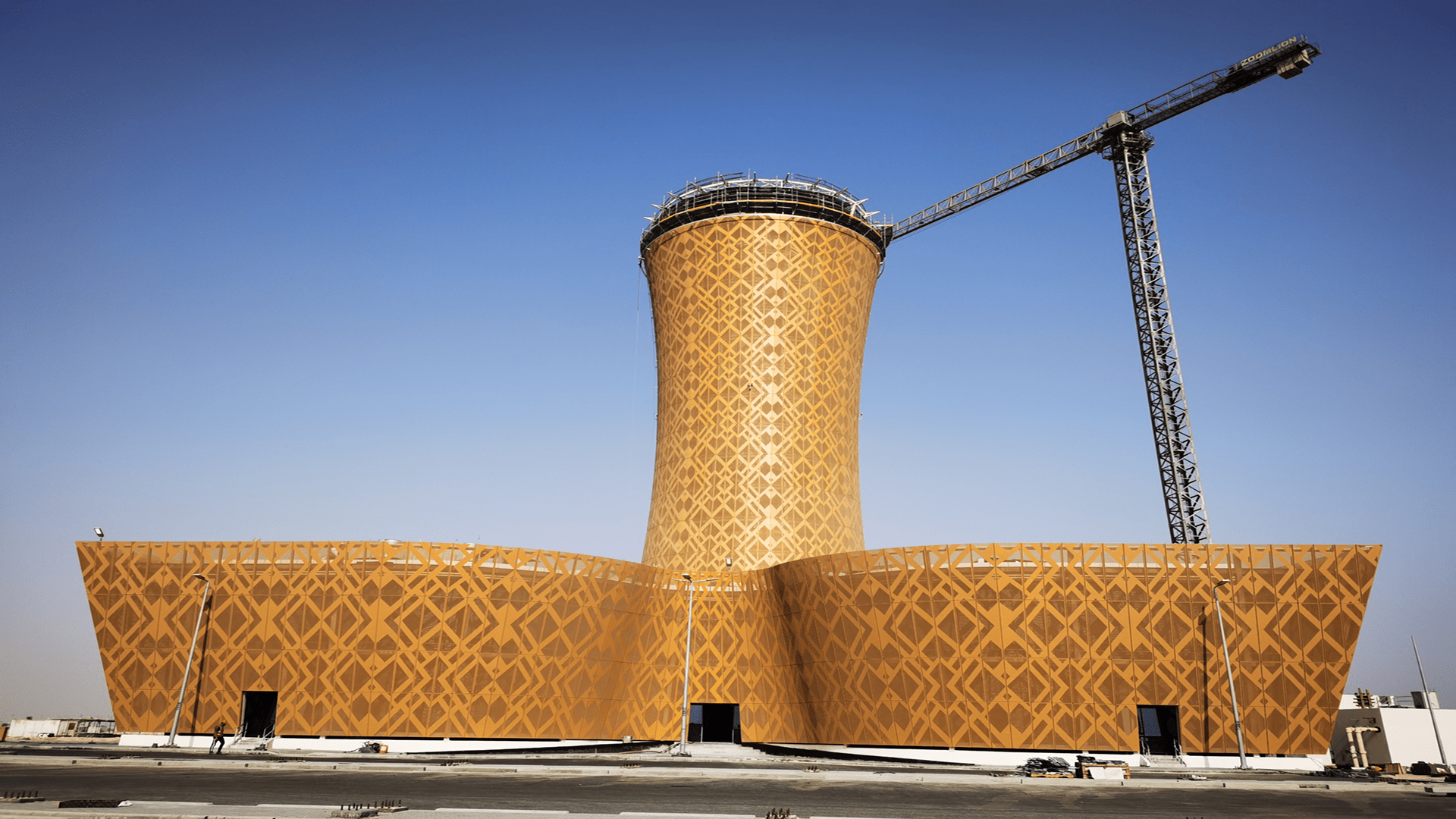Delivering future-ready designs at Kuwait Airport

Project facts
- ClientAVIC International Holding Corporation, contracted by: Directorate General of Civil Aviation – Kuwait (DGCA)
- LocationState of Kuwait
- DateJune 2017 – December 2018
- ChallengeAirport expansion and modernisation to meet passenger growth, in challenging climatic conditions.
- SolutionThe design of a new runway ensuring resilience, durability, and sustainability into the future.
Future-ready airport
Passenger flow at Kuwait International Airport has grown immensely over the last 20 years. Forecast to reach 25 million by 2025, the Kuwait Government announced an investment plan to expand and modernise in order to meet the anticipated growth and enhance connectivity between Kuwait and the world.
Alongside the development of a new passenger terminal, the expansion project included the design and construction and extension of a new third runway and associated taxiways, as well as a new state-of-the-art air traffic control tower. It also required reconstruction of the existing east runway and taxiways.
Critical to the transformation was to increase the airport’s resilience to increasingly challenging climatic conditions. Kuwait experiences incredibly hot and dry summers – regularly seeing temperatures in excess of 50 degrees, sandstorms and incidental torrential rain.
The challenge was clear: our team had to develop robust designs to enable Kuwait International Airport to meet future demand and at the same time minimise disruption throughout construction. In addition, the airport needs to be resilient-by-design to respond to the local climate, whilst delivering an iconic and memorable passenger journey that celebrates the region’s culture of hospitality.
Resilient by design
Continuing our decades-long partnership with Kuwait International Airport, NACO was selected to design the new runway and associated taxiways, including related services, infrastructure, and utilities. The scope ranged from geometric, geotechnical, pavement, drainage, and airfield ground lighting design resulting in a runway system that accommodates the largest aircraft types ensuring operational continuity during the hottest days as well as during low visibility conditions.
Leveraging our extensive experience and industry-leading expertise in runway design, our pavement designs included innovative solutions that combine durability, operational safety, and resilience against extreme temperatures.
As one of the world’s most water-stressed countries, it was imperative to collect rainwater within the new designs. When it rains in Kuwait, it can rain very heavily, so avoiding flash flooding and saving this water for later use was an important opportunity to bolster resilience.
In a climate typical of the region, the accumulation of sand and dust has to be considered – we designed a robust drainage system which ensured that all drainage inlets and pits were designed with sand traps, minimising disruption to the water facilities. The drainage system was a critical component, taking into consideration future developments to ensure extensions can be easily connected to the current design of the drainage system, thus minimising the potential of operational disruption and rework.
Large underground storage reservoirs were complemented by water-friendly vegetation to reduce water consumption and enhance the airport's environmental footprint.
Comprehensive geotechnical surveys were completed to address soil conditions, which are crucial in establishing the longevity of a design, as cavities or other subsoil conditions are not uncommon in this region. Additionally, the renovation of the first runway prioritised sustainability by reusing materials whenever possible.

With this project we have helped solidify Kuwait Airport’s position as a regional hub within the Middle East. We are very pleased to have delivered designs which will ensure their operations are fit for the future.


A new regional air hub
With construction due to be complete in 2025 our design has put Kuwait International Airport well on the way to solidifying its position as a new regional hub within the Middle East.
Its status will be cemented upon completion of the project – by which time much of the airport’s infrastructure will have been overhauled – not only meeting the immediate requirements of today but also delivering long-term sustainability measures into the future.
A key feature of the project is its iconic new air traffic control tower – a hallmark of any major airport – which serves as a beacon to welcome visitors to Kuwait, a key signifier of the region’s architectural identity and culture of hospitality.
Home to air traffic control, responsible for all aircraft movements to, from and on the airfield, the tower needs to provide a high-quality working environment. Exposed to the bright light and heat of the sun, minimising heat influx while ensuring good visibility all around required highly specialised and balanced design solutions. The metal ‘Arabic cloak’ design not only presents an elegant shape to the tower – it also provides shelter against the harsh climate, offering shade and protection from the heat.
The success of the project has been driven by a multi-disciplinary project team, who have fostered a spirit of cooperation and coordination with all key stakeholders throughout, with an eye to promote the vision of the state of Kuwait, aviation safety, engineering excellence and greater sustainability, to ensure the airport is truly resilient with the ability to fit the future need of the aviation industry and improve resilience tocope with inevitable climate changes.